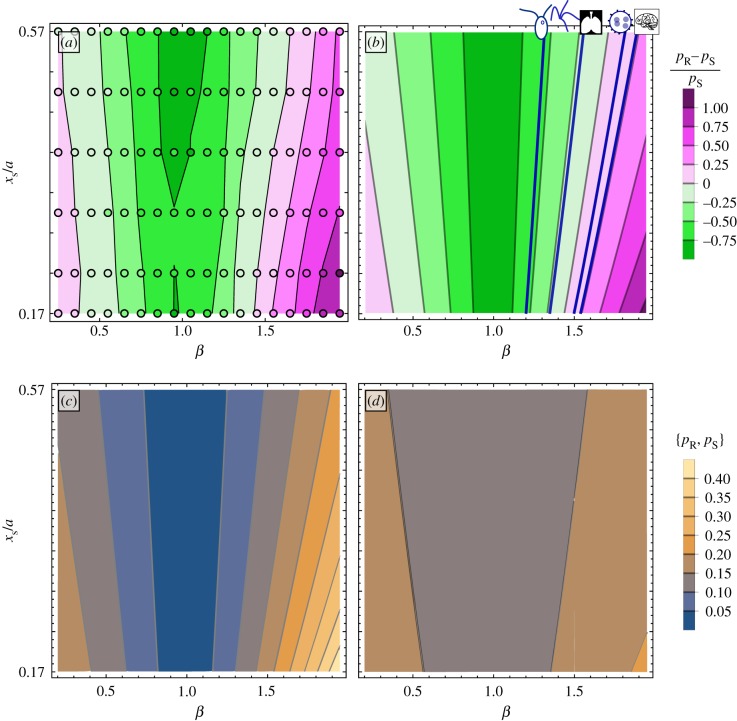Figure 3.
The range of detuning in which oscillators can mutually synchronize or entrain is not the same, resulting from a different sensitivity to underlying characteristics of the oscillators' motion. (a) The difference in detuning range at vext/v0 = 0.071 as measured from simulation. Each individual simulation is marked by a circle symbol, and the contour map is fitted to the data. (b) The predicted difference in detuning range as calculated using phase reduction. The mean difference observed for different organisms are included as dark blue lines; from left to right the organisms are Chlamydomonas, quadri-flagellates, lung epithelial, Volvox, and mouse brain cilia. (c) The predicted detuning range for mutual entrainment between rowers pR as the trap driving their motion is varied. When the traps are linear, β = 1, the rowers do not synchronize, but pR increases quickly as the trap departs from linear. (d) The same sensitivity to the trap shape is not seen in the detuning range in which entrainment occurs pS, with pS ≈ 0.18 while in the same range pR ∈ [0, 0.45].

